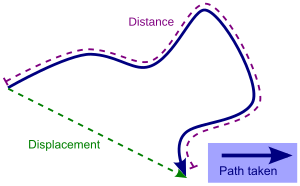The McCutcheon index or chemotactic ratio is a numerical metric that quantifies the efficiency of movement. It is calculated as the ratio of the net displacement of a moving entity to the total length of the path it has traveled. [1][2]

The index acts as an evaluative measure of the directness of movement. A value close to 1 indicates that a moving entity performed its movement in a very direct manner, minimizing detours. On the other hand, a lower value indicates that the entity has achieved only a marginal net displacement, despite traveling a considerable distance. The index is used to evaluate movements of, for example, leukocytes, bacteria, or amoebae.[3]
It is named after Morton McCutcheon who introduced it to describe chemotaxis in leukocytes.
References edit
- ^ Chemotaxis in Leukocytes Archived 2012-07-15 at archive.today
- ^ The response of human neutrophils to a chemotactic tripeptide
- ^ Levandowsky, Michael; White, Benjamin S.; Schuster, Frederick L. (1997). "Random Movements of Soil Amebas" (PDF). Acta Protozoologica. 36 (4): 237–248 (PDF). Retrieved June 9, 2023 – via rcin.org.pl.
{{cite journal}}: Check|archive-url=value (help)
